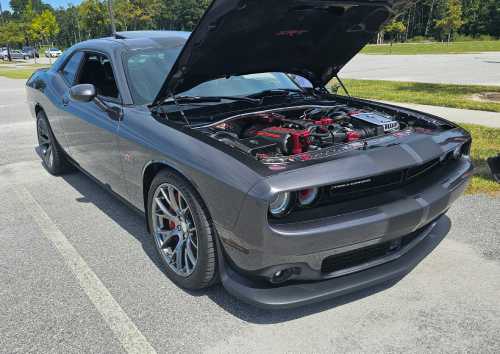
The roaring engines, screeching tires, and the unmistakable thrill of acceleration—these are the hallmarks of muscle cars, a genre of automobiles deeply ingrained in American automotive culture. The history of muscle cars is a captivating narrative that began in the mid-20th century and has since evolved, leaving an indelible mark on the automotive world. In this article, we embark on a journey through time to explore the origins, zenith, and enduring legacy of muscle cars.
Birth of the V8 Engine (1930s-1940s)
The foundation of the muscle car phenomenon can be traced back to the 1930s and 1940s when American automakers began developing powerful V8 engines. These engines, with their high horsepower and torque, laid the groundwork for the future of high-performance vehicles.
Post-World War II Era (1940s-1950s)
In the years following World War II, a subculture known as “hot rodding” gained momentum. Enthusiasts started modifying their cars to enhance speed and power, unknowingly sowing the seeds for the muscle car movement.
1955 Chevrolet Small Block V8
Chevrolet’s introduction of the small block V8 engine in 1955 was a pivotal moment. This compact yet potent engine was capable of producing substantial power, revolutionizing the way people thought about automotive performance. It would go on to play a crucial role in the muscle car revolution.
Late 1950s-1960s – The Dawn of Muscle Cars
While the late 1950s saw the emergence of cars like the 1957 Rambler Rebel, it was the 1964 Pontiac GTO that is often credited as the first true muscle car. It combined a mid-sized body with a high-performance V8 engine, setting the standard for what a muscle car should be.
Muscle Car Golden Age (1960s-1970s)
The 1960s and early 1970s are celebrated as the golden age of muscle cars. Iconic models like the Ford Mustang, Chevrolet Camaro, Dodge Charger, and Plymouth Road Runner captured the hearts of enthusiasts worldwide. These muscle cars were equipped with massive engines, including the legendary 426 Hemi and 454 LS6, producing astonishing horsepower figures.
Muscle Car Culture and Racing
Muscle cars weren’t just street performers; they were also formidable competitors in various motorsports, including drag racing and NASCAR. This racing pedigree further solidified their reputation for speed and power.
Regulations and Decline (1970s-1980s)
The early 1970s brought stricter emissions regulations and rising insurance costs, which began to affect muscle car production. Many manufacturers were forced to detune their engines, and some iconic models were discontinued. This marked the beginning of the decline of the original muscle car era.
Resurgence (1980s-Present)
While the original muscle car era waned, it never truly disappeared. In the 1980s, automakers initiated a revival of classic models like the Ford Mustang and Chevrolet Camaro. These modern iterations retained the spirit of muscle cars while incorporating advanced technology and improved fuel efficiency.
Contemporary Muscle Cars
Today, muscle cars are very much alive and thriving. Updated versions of classic models like the Dodge Challenger Hellcat and Chevrolet Corvette continue to push the boundaries of performance. They blend classic style with modern engineering, capturing the hearts of a new generation of enthusiasts.
Conclusion
The history of muscle cars is a testament to American ingenuity, a story of speed, power, and passion that has captivated generations of automotive enthusiasts. From their humble beginnings as modified hot rods to their reign as the kings of the open road, muscle cars have left an indelible mark on the automotive world. With a resurgence in contemporary models, the legacy of muscle cars continues to rev on, ensuring that their thunderous presence will be felt on the asphalt for years to come.
Latest posts by The Customized Ride (see all)
- 50th Annual Daytona Turkey Run: A Must-Attend Automotive Extravaganza - November 8, 2023
- Unveiling Our Vision: The Essence of Our Custom Car Media Brand - September 26, 2023
- 32nd Annual Slamfest Car & Truck Show - September 26, 2023
